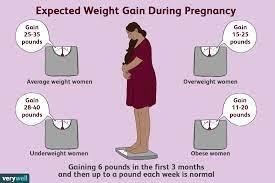A nurse is caring for a client who is at 6 weeks of gestation with her first pregnancy and asks the nurse when she can expect to experience quickening. Which of the following responses should the nurse make?
"This always happens by the end of the first trimester of pregnancy."
"This will occur during the last trimester of pregnancy."
"This usually happens between the fourth and fifth months of pregnancy"
"This will happen once the uterus begins to rise out of the pelvis."
The Correct Answer is C
A. "This always happens by the end of the first trimester of pregnancy.": Quickening typically occurs later in pregnancy, not by the end of the first trimester.
B. "This will occur during the last trimester of pregnancy.": Quickening occurs much earlier than the last trimester.
C. "This usually happens between the fourth and fifth months of pregnancy.": Quickening, which is the first perception of fetal movements by the mother, generally occurs between 16 to 20 weeks of gestation.
D. "This will happen once the uterus begins to rise out of the pelvis.": Quickening does not directly correlate with the rising of the uterus out of the pelvis.
Nursing Test Bank
Naxlex Comprehensive Predictor Exams
Related Questions
Correct Answer is C
Explanation
Choice A: A weight gain of about 1 pound per week is a general guideline for women with normal BMI. However, for a client with a BMI of 26.5, the recommended weight gain during pregnancy may differ.
Choice B: Gaining 11 to 20 pounds may not be sufficient for a client with a BMI of 26.5, as the recommended weight gain is slightly higher for women with a higher prepregnancy BMI.
Choice C: For a client with a BMI of 26.5, the recommended weight gain during pregnancy is approximately 15 to 25 pounds. This range is specific to women with a BMI in the overweight category.
Choice D: Gaining 25 to 35 pounds is recommended for clients with a lower BMI range (normal BMI). For a client with a BMI of 26.5, this amount of weight gain may be excessive.

Correct Answer is ["B","E"]
Explanation
Choice A: Amniocentesis is not primarily performed to determine the gender of the fetus. The main indication for this procedure is to detect genetic abnormalities or chromosomal disorders.
Choice B: The primary purpose of an amniocentesis is to detect chromosomal abnormalities such as Down syndrome (trisomy 21), trisomy 18, and trisomy 13, among others.
Choice C: Rh incompatibility is assessed through blood tests, not amniocentesis. It involves determining the Rh factor of the mother's blood and monitoring for potential Rh sensitization.
Choice D: Cephalopelvic disproportion refers to a situation where the baby's head is too large or the mother's pelvis is too small to allow for a vaginal delivery. It is not related to amniocentesis.
Choice E: While detecting neural tube defects can be done through amniocentesis, it is not the primary indication for the procedure. Neural tube defects can also be screened for through blood tests and ultrasound examinations. Amniocentesis is more commonly used for chromosomal analysis.
Whether you are a student looking to ace your exams or a practicing nurse seeking to enhance your expertise , our nursing education contents will empower you with the confidence and competence to make a difference in the lives of patients and become a respected leader in the healthcare field.
Visit Naxlex, invest in your future and unlock endless possibilities with our unparalleled nursing education contents today
Report Wrong Answer on the Current Question
Do you disagree with the answer? If yes, what is your expected answer? Explain.
Kindly be descriptive with the issue you are facing.
